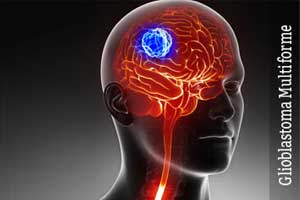- Home
- Editorial
- News
- Practice Guidelines
- Anesthesiology Guidelines
- Cancer Guidelines
- Cardiac Sciences Guidelines
- Critical Care Guidelines
- Dentistry Guidelines
- Dermatology Guidelines
- Diabetes and Endo Guidelines
- Diagnostics Guidelines
- ENT Guidelines
- Featured Practice Guidelines
- Gastroenterology Guidelines
- Geriatrics Guidelines
- Medicine Guidelines
- Nephrology Guidelines
- Neurosciences Guidelines
- Obs and Gynae Guidelines
- Ophthalmology Guidelines
- Orthopaedics Guidelines
- Paediatrics Guidelines
- Psychiatry Guidelines
- Pulmonology Guidelines
- Radiology Guidelines
- Surgery Guidelines
- Urology Guidelines
Scientists develop fungus-derived toxin as potential treatment for Glioblastoma

Dr Alexander Kornienko, a professor in the Department of Chemistry and Biochemistry at Texas State University, has been awarded a National Institutes of Health (NIH) grant to study the potential of a fungus-derived treatment for an aggressive, deadly form of brain cancer.
The Kornienko's study, "Acid-Sensitive Glioblastoma Prodrugs Derived from Ophiobolin A," is being carried out with a goal of enhancing the potential treatment's selectivity in targeting tumours.
Glioblastoma multiforme is the most common form of malignant brain tumor and is resistant to current forms of chemotherapy. Following surgery and radiation treatments, patients suffering from glioblastoma have a life expectancy of approximately 12 months, Kornienko said. The addition of current chemotherapy treatments only increases the life expectancy of patients to 14 months. The potential effectiveness of Ophiobolin A as a new, front-line chemotherapy treatment is promising.
"Ophiobolin A is produced by a fungus that affects agricultural crops," Kornienko said. "Thus, it was originally investigated for its effect on plants. But then it was found that this toxic molecule works by a different mechanism than modern chemotherapy."
Modern chemotherapy kills cancer cells by inducing a type of cell death known as apoptosis. Glioblastoma cells, however, have developed mechanisms to resist this type of cell death, rendering current chemotherapy ineffective against them. Ophiobolin A induces cell death using a mechanism unrelated to apoptosis, one that has been shown to kill glioblastoma cells. The trouble is, Ophiobolin A is also toxic to healthy cells, leaving researchers with the challenge of how to target glioblastoma cells while leaving the normal cells unharmed.
"The idea is to make this molecule more selective, and kill cancer cells in the presence of normal cells. To do that, we hope to take advantage of the specific tumor microenvironment," Kornienko said. "The molecule itself is what's known as a prodrug –inactive – but when it goes into a tumor microenvironment, it is sort of uncaged and becomes an active drug that kills glioblastoma cells.
"A tumor microenvironment is more acidic than that of normal tissue," he said. "The compound remains in prodrug form until it finally gets into the tumor tissue, where it will undergo the release of the toxic agent and the tumor cells will undergo cell death. The acid present in a tumor microenvironment will allow the prodrug to release the active drug."
In the first year of the study, Kornienko will research the most promising prodrugs that are stable at a pH of 7.4, but will undergo hydrolysis – a reaction with water causing a chemical breakdown – at a pH of 6.2-6.4 in the tumor microenvironment and release Ophiobolin A. In the second year of the study, the most effective prodrugs will be introduced to cancerous cell cultures at low pH in a laboratory environment, demonstrating that acidic conditions facilitate the death of the targeted tumor cells. If all goes well, the third year will involve testing in laboratory mice by collaborators at the University of Pittsburgh.
"We have very strong preliminary data which shows the feasibility of what we're proposing," Kornienko said. "When used in the prodrug form, they don't release the active agent, but at low acidity, they do. We have identified molecules which do exactly that."

Disclaimer: This site is primarily intended for healthcare professionals. Any content/information on this website does not replace the advice of medical and/or health professionals and should not be construed as medical/diagnostic advice/endorsement or prescription. Use of this site is subject to our terms of use, privacy policy, advertisement policy. © 2020 Minerva Medical Treatment Pvt Ltd